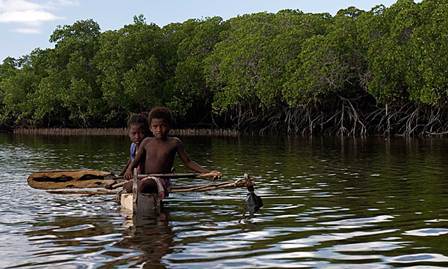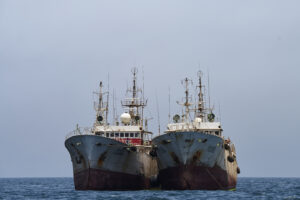Covering over 70% of the planet’s surface, oceans represent the planet’s largest active carbon sink, mitigating the effects of climate change through the absorption of anthropogenic carbon emissions.
‘Blue carbon’ ecosystems, including tidal marshlands, mangrove swamps, and seagrass meadows, lock down vast amounts of carbon within their plant tissue, and especially in the surrounding soil and sediment. As well as their importance to marine biodiversity worldwide these ecosystems support coastal communities through tourism, shoreline protection and fisheries, and are critical to the food security, cultures and livelihoods of hundreds of millions of people in developing coastal nations.
However current unprecedented rates of degradation of blue carbon habitats, through coastal development, habitat conversion and land reclamation, are resulting in huge avoidable greenhouse gas emissions. Currently between 2-7% of our blue carbon sinks are lost annually. Effective conservation of blue carbon ecosystems is an essential part of the solution to curb emissions, providing a mechanism for naturally mitigating climate change whilst advancing adaptation to climate impacts.

Vezo children fishing in mangrove lagoon, southwest Madagascar. Copyright Garth Cripps, Blue Ventures Conservation
The Blue Climate Coalition statement to delegates was signed by 55 members of the Coalition, comprising marine and environmental stakeholders from nineteen countries. The Coalition was formed in November 2009 to help advance coastal and marine conservation as part of the solution to climate change. Over 100 conservation groups and environmental stakeholders, and over 150 scientists together from 43 countries, have joined the Coalition’s call to support blue carbon solutions for climate change.
The COP16 statement followed letters delivered to global institutions including the White House and the Global Environment Facility, aimed at promoting policy and funding in support of action for blue carbon conservation. President Obama was asked to include the conservation and restoration of coastal and marine ecosystems in his plans for economic recovery, and in policies for climate change mitigation.
Blue Ventures is working to develop strategies for the measurement of carbon fluxes within mangrove ecosystems, to contribute to the development of standard methods for quantifying the reduction in carbon dioxide emissions that can be achieved through mangrove conservation and restoration.
“Blue carbon habitats have fallen by the wayside in international climate negotiations”, said Dr. Garth Cripps, blue carbon specialist with Blue Ventures in Antananarivo, Madagascar. “Our vision is to help tropical coastal communities establish blue carbon conservation programmes that will bring them income and enable conservation of critical coastal habitats. In the long term this will build community resilience to climate change through enabling ecosystem-based adaptation.”
More information about the Blue Climate Coalition, including the statement and recommendations to COP16 delegates signed by Blue Ventures can be found here.
For more information about Blue Ventures’ blue carbon work contact Dr Garth Cripps here.






















